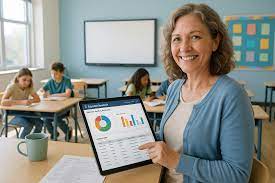
The Ultimate Educators Handbook: Essential for Effective Teaching
Educators play a vital role in shaping the future by nurturing the intellectual and personal growth of students. Whether you’re a seasoned teacher or a new educator, having a solid reference guide can make all the difference. This educators handbook is designed to provide you with valuable insights, strategies, and tools to help you succeed in the classroom. In this article, we’ll explore the key components that should be included in your educator’s toolkit.
What is an Educators Handbook?
An educators handbook is a comprehensive guide designed to support teachers in their professional journey. It serves as a valuable resource for both new and experienced educators, offering practical advice on various aspects of teaching. From lesson planning and student engagement to classroom management and assessment techniques, this handbook ensures that teachers are well-equipped to meet the diverse needs of their students.
Key Elements Every Educators Handbook Should Include
An effective educators handbook should cover a variety of essential topics that support a teacher’s success in the classroom. Below are the key elements that every handbook should include:
1. Classroom Management Strategies
Classroom management is one of the most critical components of successful teaching. An educators handbook should provide a variety of techniques for maintaining discipline and fostering a positive learning environment. Strategies such as creating clear expectations, establishing routines, and using positive reinforcement can help in managing student behavior effectively.
2. Lesson Planning and Curriculum Design
A well-structured lesson plan is the foundation of effective teaching. The handbook should guide educators in designing lessons that cater to diverse learning styles and meet curriculum standards. It should also include tips on how to make lessons engaging and interactive, ensuring students are motivated to participate and learn.
3. Student Assessment and Feedback
Assessment is crucial in understanding student progress and identifying areas that need improvement. The educators handbook should offer guidance on how to design assessments that are both fair and effective. Additionally, it should emphasize the importance of providing constructive feedback to students, helping them understand their strengths and areas for growth.
4. Communication with Parents and Guardians
Strong communication between teachers and parents is essential for student success. The handbook should offer strategies for building and maintaining positive relationships with parents and guardians. Effective communication can lead to better understanding and collaboration between home and school, which ultimately benefits the student’s learning experience.
5. Professional Development and Growth
Teachers should continuously strive to improve their skills and knowledge. The educators handbook should highlight the importance of professional development, offering resources and suggestions for teachers to enhance their expertise. It should encourage ongoing learning and provide a roadmap for career advancement in the teaching profession.
Effective Teaching Techniques to Include in Your Educators Handbook
While the core structure of an educators handbook should be comprehensive, it is equally important to include effective teaching techniques. These techniques can range from classroom activities to ways of engaging students in deep learning.
6. Active Learning Strategies
Active learning is a dynamic approach that encourages students to actively participate in their learning process. Techniques like group discussions, hands-on activities, and problem-solving tasks help make learning more engaging. The educators handbook should explain how these methods can be applied across different subjects and grade levels.
7. Technology Integration in the Classroom
Incorporating technology in the classroom has become increasingly important. The handbook should provide educators with tools and resources to effectively integrate technology into their teaching. Whether it’s using educational apps, online collaboration tools, or multimedia presentations, technology can enhance student learning experiences.
8. Supporting Diverse Learners
Classrooms today are more diverse than ever. The educators handbook should provide strategies for supporting learners with varying abilities, backgrounds, and needs. Differentiated instruction, inclusive teaching practices, and strategies for working with students who have special educational needs should be highlighted.
9. Classroom Environment and Culture
Creating a positive classroom culture is essential for student success. The handbook should offer tips for establishing an environment that fosters respect, inclusivity, and collaboration. By setting a positive tone from the beginning, educators can ensure that students feel comfortable, motivated, and ready to learn.
Conclusion: Building a Foundation for Success
Incorporating the right strategies and techniques is essential for any educator aiming for success. An educators handbook is a vital tool that helps teachers manage their classrooms, engage students, and grow professionally. By including key elements such as classroom management strategies, lesson planning tips, and effective teaching techniques, this handbook ensures that educators are well-prepared for the challenges they may face. Embrace these valuable resources, and watch your teaching experience transform into a rewarding and successful journey.
Frequently Asked Questions (FAQs)
1. What is the purpose of an educators handbook?
An educators handbook serves as a comprehensive guide for teachers, providing essential tools, strategies, and tips to improve teaching effectiveness and classroom management.
2. How can an educators handbook help new teachers?
For new teachers, an educators handbook offers practical guidance on lesson planning, classroom management, and engaging students, helping them feel more confident and prepared.
3. What are some key strategies for classroom management?
Some effective classroom management strategies include establishing clear rules, maintaining consistency, using positive reinforcement, and creating a structured routine.
4. How can technology be integrated into teaching?
Technology can be integrated through the use of educational apps, online collaboration platforms, multimedia presentations, and interactive learning tools.
5. Why is ongoing professional development important for educators?
Professional development helps educators stay updated on best practices, new research, and innovative teaching methods, allowing them to improve their skills and advance in their careers.